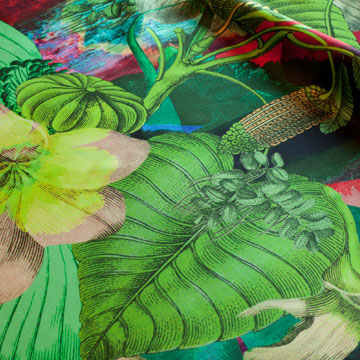Since antiquity, shiny silk fabrics in all patterns and colours have been very popular as luxury goods. They arrived in the West from China along the Silk Road where they found thankful buyers amongst the elite of the Persian and Roman empires.
From Late Antiquity onwards silk textiles were also manufactured in Byzantium and the Persian-Arabian region. In Europe silk weaving initially flourished in Italy, later in France. Florence and Venice were famous for exquisite brocade and precious velvet, Lyon for elaborately patterned wall coverings and dress fabrics.

In Zurich silk fabrics were produced from the 17th century onwards in the putting-out system. Urban entrepreneurs provided the capital and the raw silk, home weavers in the countryside produced the textiles in their homes. In the 19th century Zurich’s silk weaving industry was very successful internationally with its light taffeta fabrics.
The mechanization of silk weaving began towards the end of the 19th century. At the same time heavier silk fabrics on the model of Lyon began to be produced in Zurich. In order to circumvent tariff barriers Zurich’s silk industry soon began to transfer production abroad.
The 20th century was shaped by the rise of artificial silk, which expanded the product palette of Zurich’s silk industry. During the great depression numerous weaving mills were forced to cease operation. The surviving companies profited from the post-war boom, while the final decline began in the 1990s. Zurich’s last silk weaving mills ceased the production of new lines in 2012.